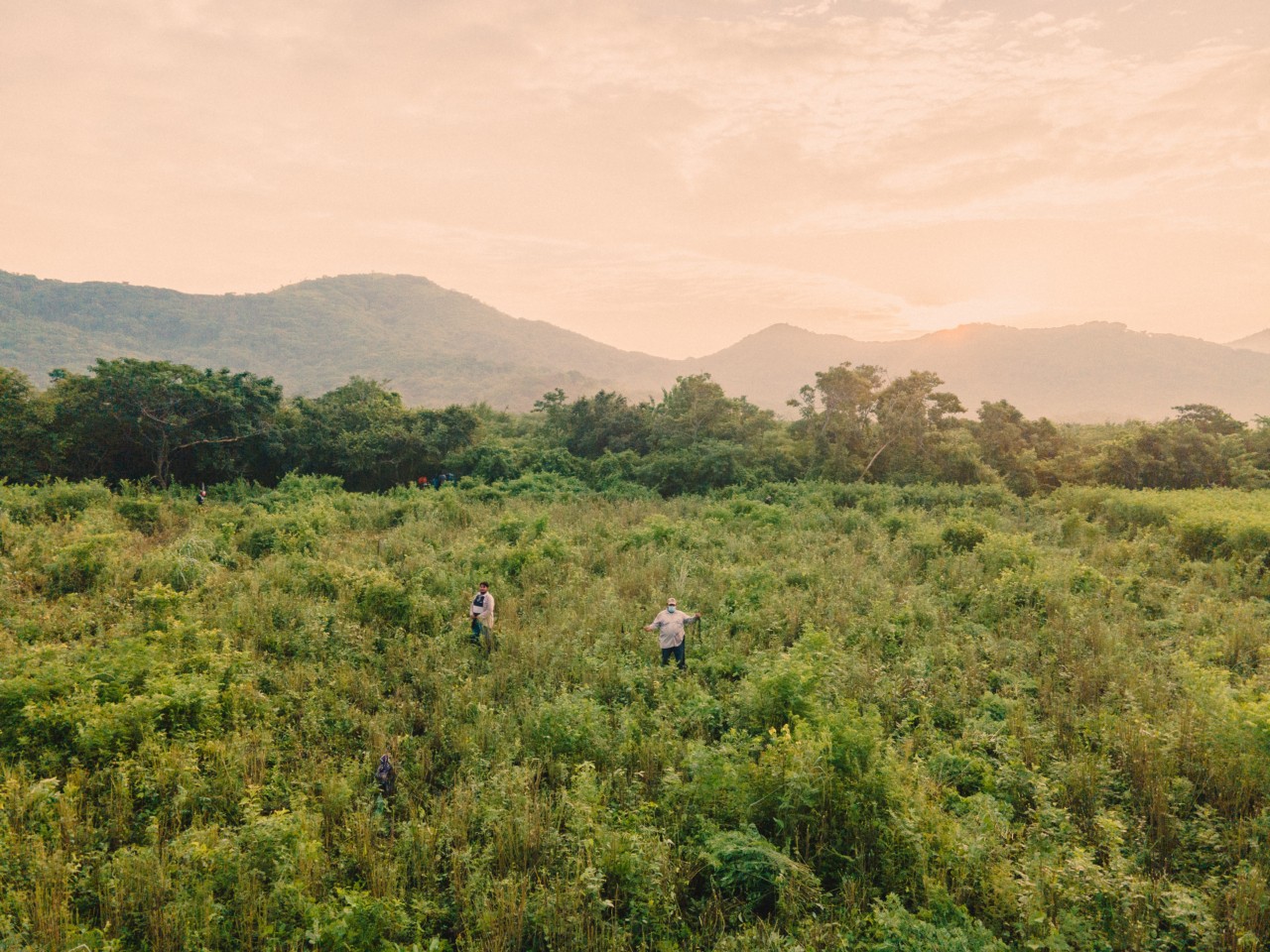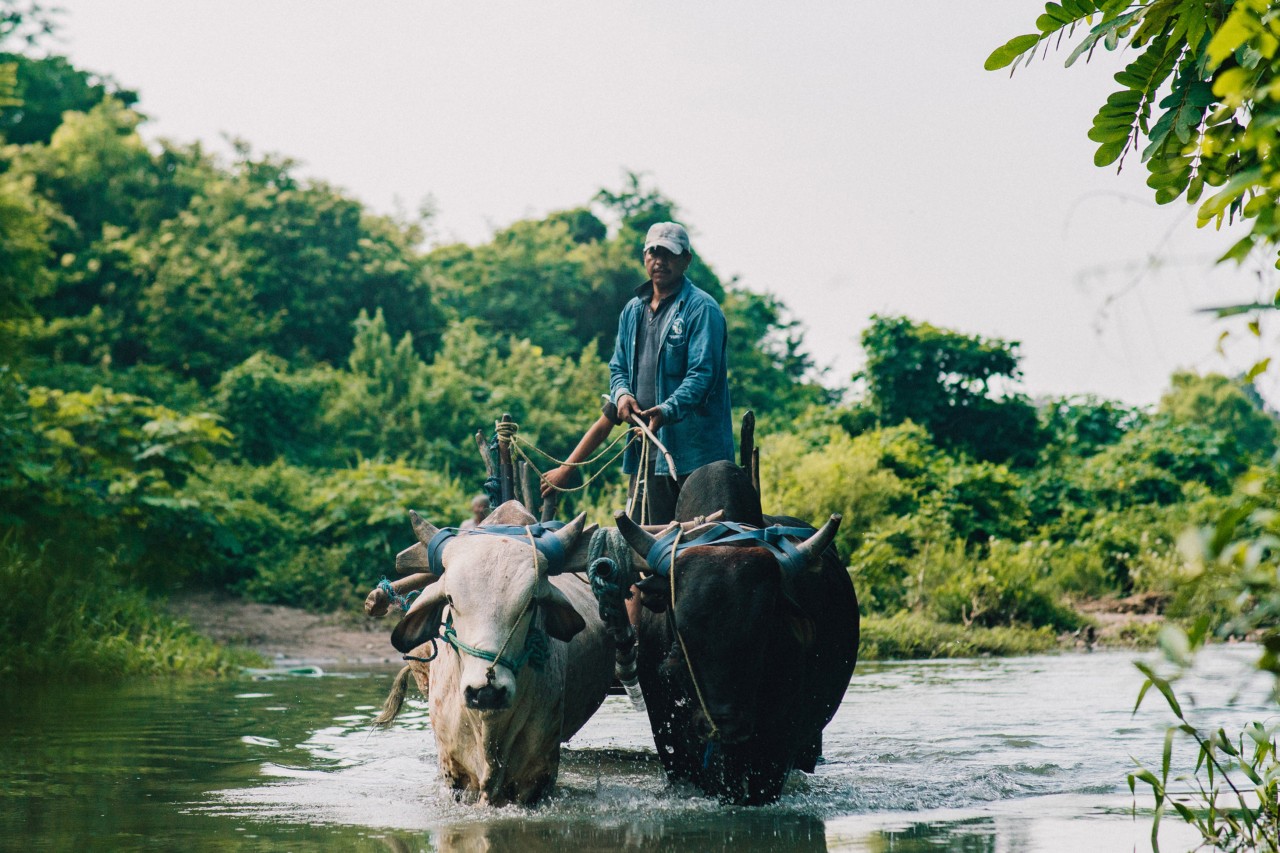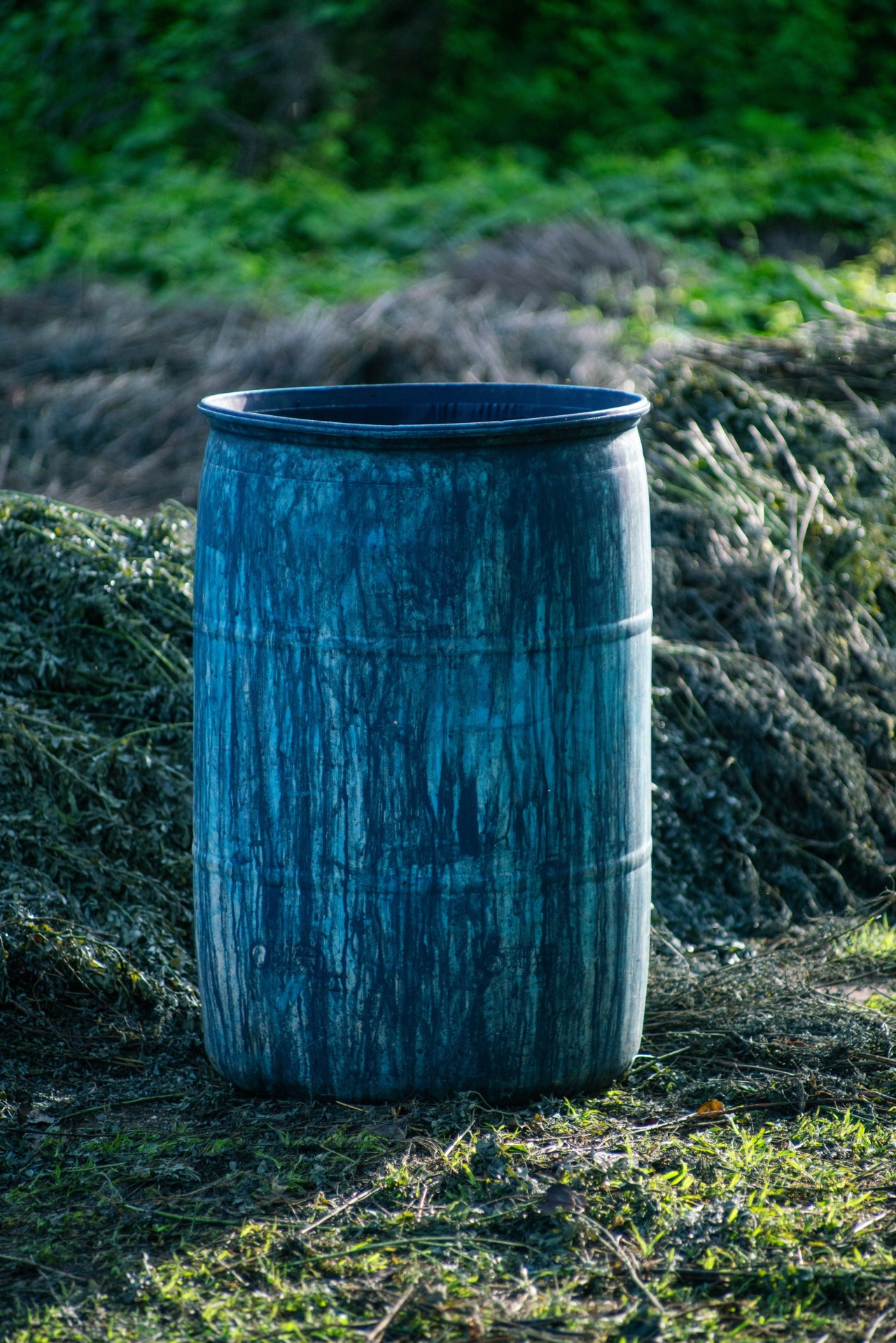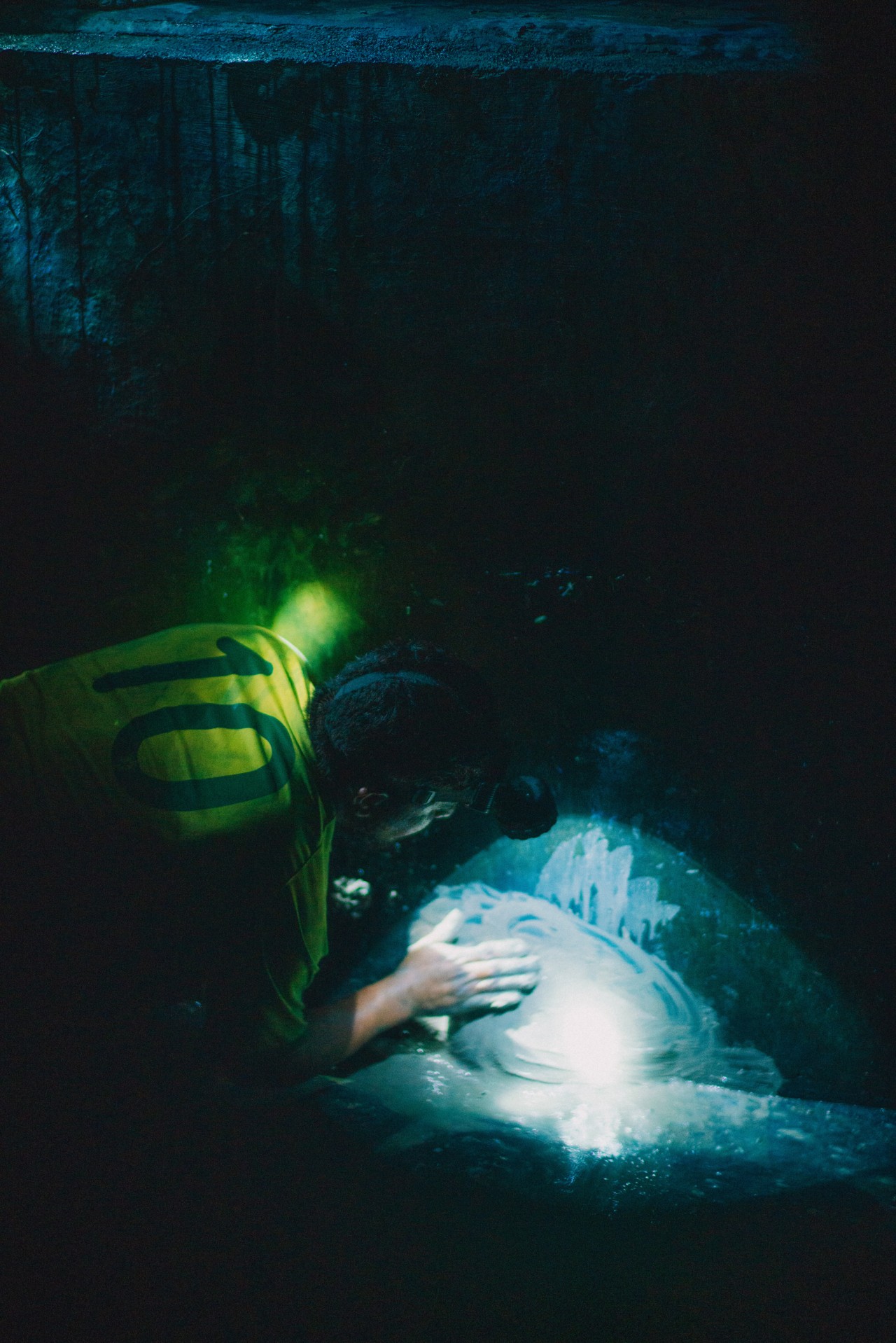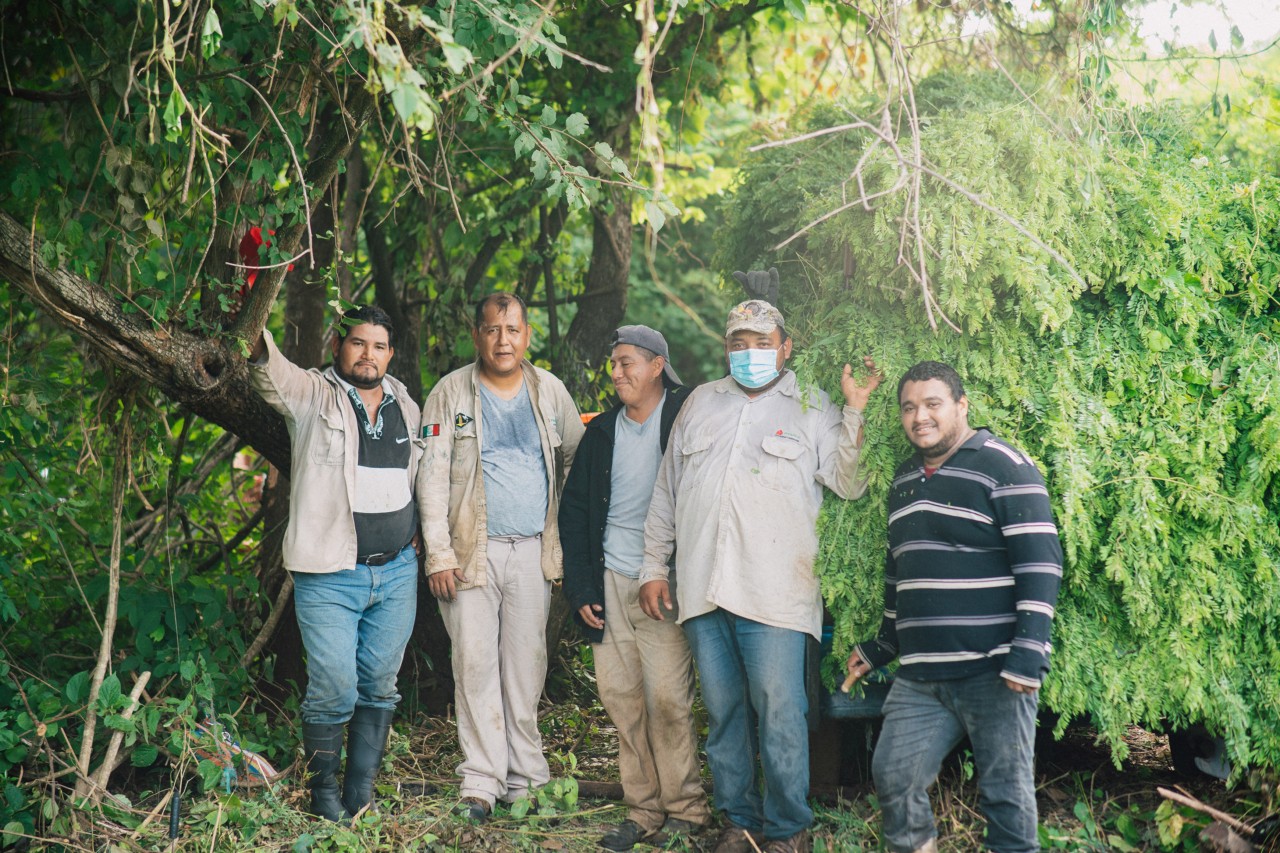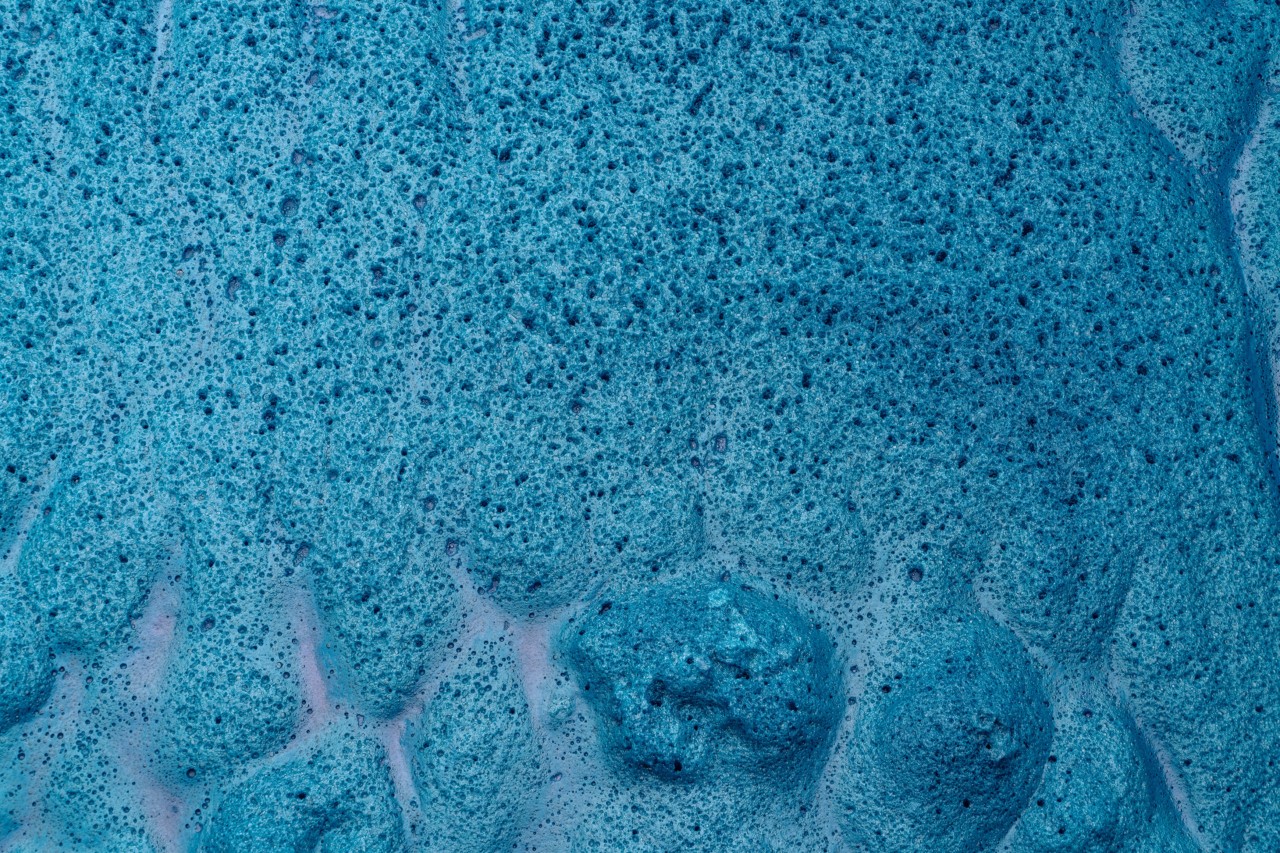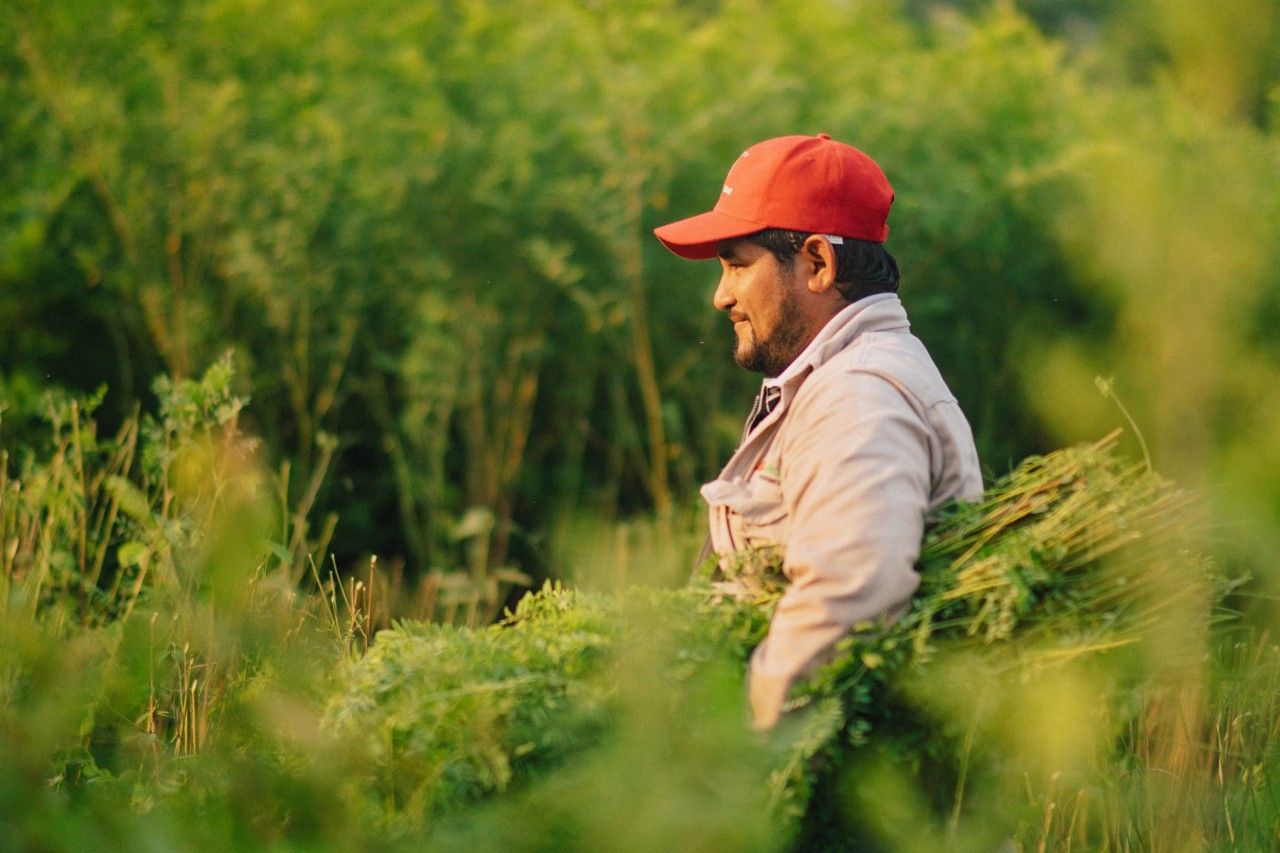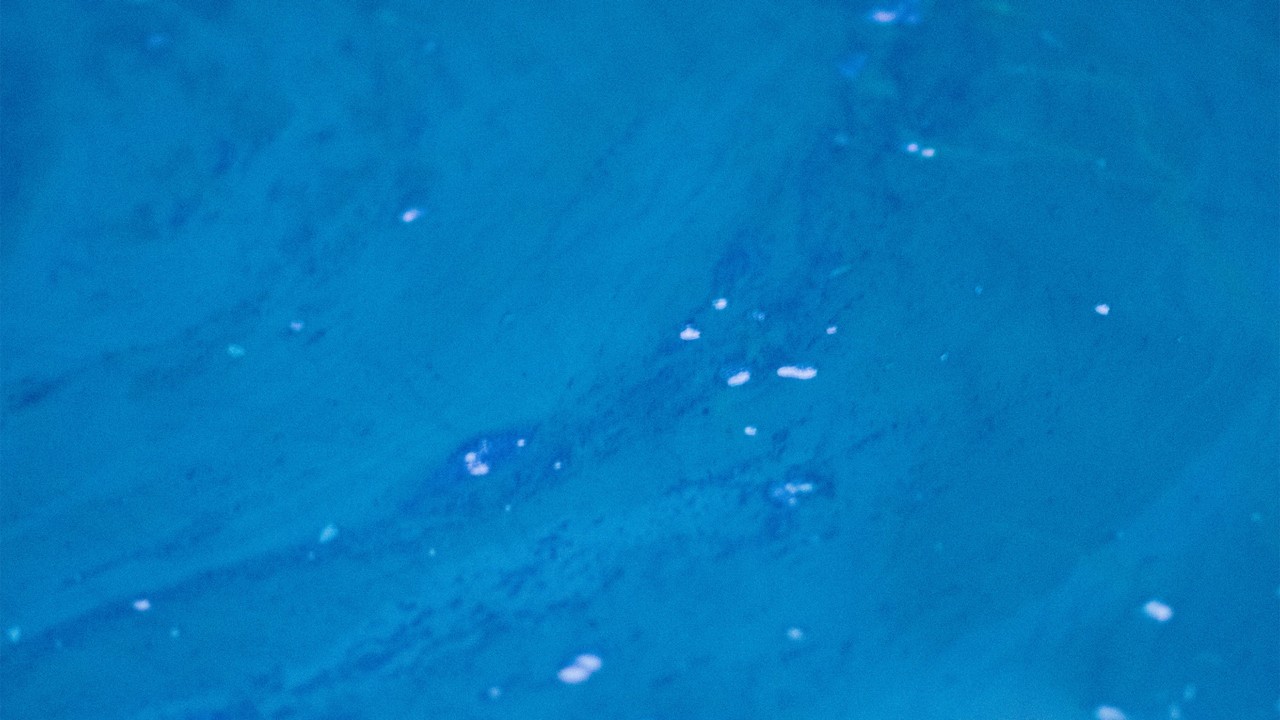

Words by Catherine Tansey
photographs by dali nelio
In the courtyard workshop of the artisanal brand, Fe y Lola, in Teotitlán del Valle, stately pedal looms line the wall and vibrant hanks of yarn hang around the bright patio. As María Dolores “Lola” Santiago Arellanes dips her arms, gloved up to the elbow and stained electric blue, into a large vat, it is the dank aroma I first notice. Earthy, sweet, almost animal. Like manure. The once-cream colored bundle of wool emerges chartreuse, but turns turquoise and then indigo before our eyes
“I only work with indigo in the morning, and when I’m at my best,” says Lola. “Indigo is very sensitive, you have to take care of it, you have to be present.”
A fourth generation master weaver and dyer, Lola is from Teotitlán del Valle, a pueblo famed for its textiles, which sits 45 minutes outside of Oaxaca city. Lola has worked with natural dyes for decades, and favors indigo above the rest. “She comes alive when dying with indigo,” her husband, Federico Chávez Sousa, tells me.
From the deep ochre of a clay griddle—comal—to the dusty green of herbs like epazote, Oaxaca is a region teeming with pigment and alive with color. But perhaps the most striking of all is the inky blue of añil—or indigo.
Indigo, the eponymous natural pigment, was once widely extracted and produced across much of Latin America for over 500 years. Today, it has a single foothold left in Mexico. In the isthmus region of Oaxaca near the border with Chiapas sits a pueblo called Santiago Niltepec—widely believed to be Mexico’s last commercial indigo-producing town. The rising popularity of synthetic dyes, ever-worsening climate collapse, and the costly labor- and resource-intensive process of extracting the pigment mean Mexican indigo production is now limited to its Niltepec guardians.

The pigment can be extracted from many plants that grow across Asia, Africa, Europe, and the Americas, from low lying shrubs to elegant bushes with lithe, bendy stems. The plants differ, as do the specific histories of each location and the species of indigo, but the color remains the same.
Even so, the blue-gold pigment that has historically been favored by royalty, aristocrats, and more recently, everyday denim jean wearers, has a violent past as a crop historically tended and produced by enslaved people. In lands where French and British colonizers produced Indigo, enslaved West Africans were used for the laborious production, while Spanish colonizers most often enslaved Indigenous people for the trade. The cheap labor enabled plantation and hacienda owners to profiteer from resource-intensive indigo production. By the end of the 18th century, estimates put the value of Guatemalan indigo alone at two million dollars and India was producing up to 100 million dollars per year worth of Indigo.
Production in Niltepec, whose name means hill of indigo in the indigenous Nahuatl language, dates back to at least the early 18th century. But it has also been widely reported that the Maya civilization, which occupied neighboring regions, relied on indigo to create their sacred pigment: Maya Blue. The azure blue color has been found in frescoes on the walls of Mayan temples dating back to the eighth century, which suggests that the color has a much more extensive history in the region.
Today, Oaxaca is in an indigo boom. Flyers plastered around the city advertise indigo workshops, indigo-dyed designer pieces line the shops of el Centro, and handwoven rugs from Teotitlán and other weaving communities expound on the many shades made possible by the ancient pigment.
But despite being a popular colorant today, Nitepec’s stone-wall piletas (indigo processing pools) have not remained in continual use. The practice was interrupted for an unspecified period of time, but today a group of 20 producers are working to preserve the tradition by embracing the original piletas, making them the most recent link in a centuries-old lineage of añileros. “I don’t come from a family of indigo producers. I learned about seven years ago when a friend invited me to plant jilquilite with him, and from there my love for indigo was born,” says Arbid Vázquez, an indigo producer and member of the cooperative, Microproductores Cerro del Jiquilite Oro Azul.


In Santiago Niltepec, the indigo species indigofera suffruticosa is extracted from jilquilite plants, which are planted in May before the rainy season begins. The jilquilite is left to grow for two to three months before the corte, or harvest, which añileros must time with precision or else jeopardize the yield. “It’s a very specialized skill honed over time to know exactly when to cut the plant and for how long to let it ferment,” says Huemac Escalona Lüttig, a history professor at the National Autonomous University of Mexico (UNAM) and expert in Latin American indigo production. “You need expertise to successfully do so, which doesn’t allow for industrialized processes.”
The day the corte kicks off is followed by four to five days of unrelenting labor for the añileros, who start work long before dawn to avoid the oppressive heat. After several humid morning hours in the field harvesting jilquilite by hand with a machete, añileros load the bundles into an oxcart and transfer them to a series of enormous processing pools where they stack the jilquilite in a cross-hatch pattern and cover it with spring water. Añileros pile logs atop the jilquilite bundles and leave the plants to ferment for up to 20 hours. Once foam bubbles form on the surface of the pools and the solution turns the color of citron, fermentation is complete.
Next, the producers add a naturally occurring rennet, a fruit called “gulabere,” which enables the pigment to separate from the water. Then, the most physically strenuous and awe-inspiring step: oxidation. For up to eight hours, workers agitate the 4,000-liter solution with meters-long paddles until it turns midnight blue. They do this by working in unison to achieve a wave that strikes the back wall of the pool and crests forward, aerating the water. From there, añileros add fresh water to help with the sedimentation of the solution, then pour the remaining solution through several layers of fabric, which act as a sieve, concentrating the inky pigment to eventually be dried and sold.
“In Niltepec, they still produce indigo as they did generations ago. The method of production hasn’t changed much from the 18th century to today,” says Huemac. “It’s important to note that, much like with grana cochinilla [another natural dye common in Oaxaca], it’s the small producers who have maintained quality indigo production and who have enabled it to transcend time.”

“Indigo is very sensitive, you have to take care of it, you have to be present.”
The main markets for this hand-extracted natural pigment exist across pockets of southern Mexico. Niltepec’s indigo is popular with both artisans in Oaxaca’s Teotitlán de Valle and other local weaving communities as well as the foreign and domestic designers, who have flocked to the region for its rich craft culture. The town also supplies artisans in Puebla and Michoacan, and sells to cosmetics companies. These small but essential markets are a relatively new emergence, rising alongside the boom in natural dyes that’s taken place over the last 25 years.
In 2013, team members from the Textile Museum of Oaxaca made the six-hour drive to Niltepec in the hopes of connecting with the pueblo to document añil production. “When we saw the process for the first time—because previously we had only read about it—it made our heads spin. It’s incredibly labor-intensive and was all done without adding a single chemical to the process,” says Eric Chavez, son of Lola and Federico from Teotitlán, a master dyer himself, and previously the educational director of the Textile Museum. “We thought to ourselves, I’m not sure that this process will still be around in even five years.”
The museum spent the following year visiting Niltepec. Team members conducted interviews with añileros, documented the process, and the museum subsequently committed to ongoing indigo purchases over a three-year period. This commitment aimed to support the preservation of the ancestral practice while also raising awareness of natural dyes in Oaxaca City, and the Museum credits this partnership as responsible for the indigo’s current prevalence in the region. “The indigo presence that you see today in the city of Oaxaca did not exist 13 years ago,” says Héctor Manuel Menes Lozano, director of Oaxaca’s Textile Museum.
While Niltepec’s status as an indigo-producing town stretches back centuries, production fell dormant for an unknown stretch of time in the 1900s in part due to the strain of competition of synthetic dyes. Indigo was first chemically manufactured in 1870, but the process was unduly time-consuming until 1897 when Karl Heumann, a Swiss scientist and employee of German chemical company BASF, identified a way to quicken production by speeding up oxidation. With more cost-effective production available, the demand for natural indigo plummeted and traditional extraction fell sharply.


It’s unknown what percentage of the population previously worked in the indigo trade in Niltepec, but today it’s just a couple dozen individuals who keep the practice alive, while working as masons, carpenters, or farmers for the rest of the year.
One man is largely credited with reviving the process in the pueblo. The late Don Octaviano Perez, who learned from añileros in the nearby town Santa María Guienagati in his twenties, returned Niltepec to its ancestral roots. Yet, it remains somewhat of a mystery how members of a town named for the pigment, and which houses centuries-old processing pools, found themselves seeking out external knowledge to relearn the practice of their ancestors. “This was just the question I was asking Don Octaviano when, all of a sudden, I couldn’t ask him anything anymore,” says Huemac, adding that soon after the researcher set out to document his knowledge, Don Octaviano died. “But I think that’s one of the things to discover.”
The partnership between Niltepec and the Textile museum made the Oaxaca market flush with indigo, giving rise to the current indigo boom and, for a time, buoying the newly re-activated industry. But in recent years, other challenges have put Niltepec’s indigo production in peril. The 8.1 magnitude earthquake that struck the isthmus of Oaxaca in 2017 decimated much of Niltepec including many aeration pools, while disagreements on the price have stunted growth as well.
But more threatening than any other single factor is climate change. “Lots of producers say, ‘Man, I don’t know if it’s worth it. I don’t know if I’m going to plant this year. It’s too expensive and if the rains don’t come, the yield will be low,’” says Justino Medina, a Niltepec resident, jilquilite farmer, and indigo vendor.
At the time of writing this, Oaxaca is at the tail end of its hot season and in its second year of severe drought. Rains should come mid- to late-May, but the season is shorter and the rain less consistent than before. Without a hearty rainfall, jilquilite won’t thrive, and the spring water for production will be harder to come by.

Considering the resource issues wrought by climate change, Arbid, part of the Microproducers cooperative, isn’t surprised that three of their 10 producers decided not to plant jilquilite in 2024. “We hope this year will be different because it didn’t rain much last year and our production was really affected, but there are no guarantees,” he says. Additionally, demand from artisans in Teotitlán, one of Nitepec’s most significant markets, has fallen. While signs along the road on the rugged landscape entering town signal that the community works almost exclusively with natural dye, insiders say that’s not the case.
Niltpec’s indigo can cost between $120-$150 USD per kilo, which makes it a considerable investment compared to the $6-$8 for synthetic indigo. “Not every textile producer can afford a kilo from Niltepec, and not everyone who says they use natural dyes and natural pigments actually use them,” says Eric. “Even when using natural dye and natural pigments, the processes for dyeing still use chemicals. So, there is a lot of education required alongside what we are trying to promote,” he adds.
While not all artists and artisans choose to work with natural indigo, many do. Contemporary designers like Samantha Martínez and Omar Chavez, among many others, are loyal purchasers of the indigo from Niltepec. Martínez, for instance, draws inspiration from her background as an architect to craft sculptural pieces for her clothing line, Kotó. Using shibori dyeing techniques with her Niltepec indigo, the artist heightens the dimensions of her pieces, masterfully coaxing out shadows, lines, and visual interest.
Weaver Omar Chavez, also a son of Teotitlán de Valle’s Lola and Federico, brings a modern take to the traditional Zapotec motifs and techniques of his ancestors. Chavez’s tapestries often play across the gradient of blues made possible by indigo, which is not an easy feat. Much like extracting indigo, working with the colorant requires patience and commitment. Dyers must prepare their indigo vat with precision and regularly maintain it. As a pigment, not a dye, indigo must first be made soluble in water then layered, molecule by molecule onto natural fiber. It’s finicky and demands respect.
As for Chavez, it’s not a lack of demand from artists in Oaxaca that he fears will erode the añileros work in Niltepec, but rather a more vague threat emanating from our hyper-consumerist world. “We must respect the fact that things take time, that natural processes require patience,” he says. “Rather than looking for a shortcut that is cheaper or faster, it’s about educating our consumers and valuing the process ourselves.”


Indigo Was Once Reserved for Royalty. Today It’s a Dying Art.
